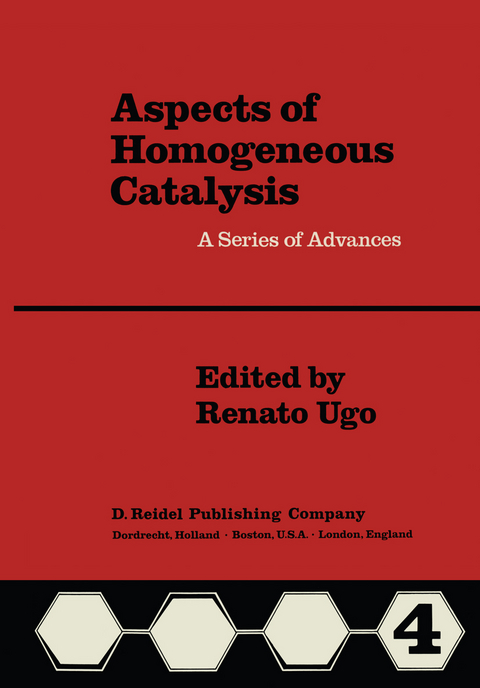
Aspects of Homogeneous Catalysis
Springer (Verlag)
978-94-009-8373-1 (ISBN)
It involves the reaction of propylene with an alkyl hydroperoxide in the presence of a soluble, metal catalyst (usually a molybdenum compound). The alkyl hydroperoxide is prepared by autoxidation of an appropriate hydro- carbon. For example, tert-butyl hydroperoxide (TBHP) is prepared by autoxida- tion of isobutane. (6) Reaction with propylene gives propylene oxide and tert-butanol as a coproduct.
of Volume 4.- Metal-Catalysed Epoxidations of Olefins with Hydroperoxides.- 1. Introduction.- 2. Metal-Catalysed Epoxidations with Hydrogen Peroxide.- 3. Covalent Metal Peroxides as Epoxidizing Agents.- 4. Metal-Catalysed Epoxidations with Alkyl Hydroperoxides.- 5. Oxidation of other Functional Groups.- 6. Summary.- 7. Glossary of Non-Standard Abbreviations.- 8. References.- Homogeneous Catalytic Reduction of Carbonyl-, Azomethine-, and Nitro-Groups.- 1. Introduction.- 2. Reduction of the Carbonyl Group.- 3. Reduction of Schiff Bases.- 4. Reduction of Nitro-Compounds.- 5. Dihydrogen Evolution.- 6. Reaction Mechanisms.- 7. Conclusions.- 8. Abbreviations for Ligand Names.- 9. References.- Catalysis of Diolefin Reactions by ?3-Allyl Metal Complexes.- 1. Introduction.- 2. Allyl-MT Complexes: Bonding and Dynamic Behaviour.- 3. Oligomerisation, Co-Oligomerisation and Polymerisation of Diolefins.- 4. Relation between Catalyst Structure and Kinetic and Thermodynamic Controls of Butadiene Oligo- and Polymerisation Processes.- 5. Isomerisation of Diolefins.- 6. Heteroactivation of Diolefins.- 7. Conclusions.- 8. References.- Substrates and Phosphorus Ligands Used in Asymmetric Homogeneous Hydrogenations Catalysed by Rhodium Complexes.- 1. Introduction.- Table I: Chiral phosphines used as ligands in the rhodium-catalysed asymmetric hydrogenation.- Table 2: Substrates in the rhodium-catalysed asymmetric hydrogenation.- 2. References.
| Reihe/Serie | Aspects of Homogeneous Catalysis ; 4 |
|---|---|
| Zusatzinfo | 212 p. |
| Verlagsort | Dordrecht |
| Sprache | englisch |
| Maße | 170 x 244 mm |
| Themenwelt | Naturwissenschaften ► Chemie ► Physikalische Chemie |
| Technik | |
| ISBN-10 | 94-009-8373-5 / 9400983735 |
| ISBN-13 | 978-94-009-8373-1 / 9789400983731 |
| Zustand | Neuware |
| Haben Sie eine Frage zum Produkt? |
aus dem Bereich


